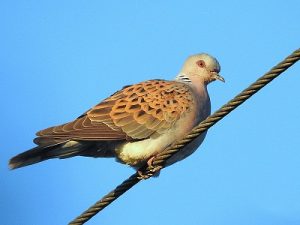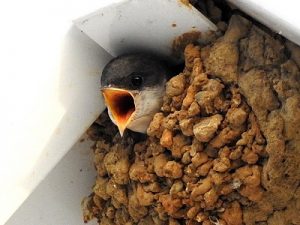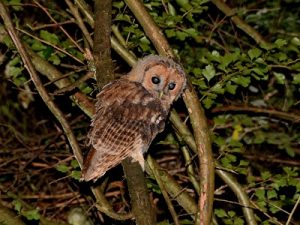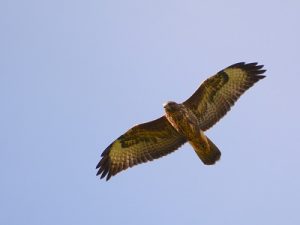Background

It has become obvious over the last 30 years that there has been a significant decline in the bird population of the UK and indeed locally. In order to provide information on the status of the local birds, Henfield Birdwatch was conceived in 1998. Its aims are to conduct regular, reproducible, in-depth surveys of the birds of Henfield parish every five years over a long period of time and to involve the local community in a project that brings together a large number of people with an interest and common purpose.
The results of the first survey which took place in 1999 are intended to provide a baseline for comparison of further surveys and thus to provide us with one indicator of the environmental health of the parish. Surveys (run according to the standards of the British Trust for Ornithology {BTO} took place in 1999, 2004, 2009, and 2014 providing a total of 143,495 records from 151 species.
An illustrated report of the findings has been produced after each survey and in 2011 Henfield Birdwatch received the BTO’s prestigious Marsh Award for exceptional activity in completing a study and producing a book which advances a community’s knowledge about birds.
Results

The BTO has been organising regular bird surveys of the whole country for 47 years and can provide 47-year trend and 25-year population trends and data from these surveys provide the best available national trend for each commonly occurring bird species. In this report I have used the BTO 25-year trends to compare with the 20-year trends arising from the Henfield surveys. I have also concentrated on BTO “Birds of Conservation Concern” i.e. those showing severe population decline. Those of greatest concern are known as “red-listed“ birds and those showing significant decline of less that 50% are in the “amber list”. I believe that this is the best way to stress the importance of Henfield in providing habitats for species regarded as specifically important.
Of the 24 red-listed species, 20 have been noted at some time in Henfield parish but Lesser Spotted Woodpecker, Tree Sparrow, Grey Partridge, Corn Bunting, Tree Pipit, and Marsh Tit have either disappeared from Henfield or are so rare that any data on them cannot be used to establish a trend.
Note: the coloured text indicates whether a species population trend is better in Henfield (green) or worse (red) than the national BTO trend.
Table 1 Red-Listed Birds. National v Henfield Trends
| Red-Listed Species | BTO National Trend | Henfield Trend | Comment |
|---|---|---|---|
| Turtle Dove | -94% | -70% | Catastrophic decline, but still holding on. Henfield and Arun Valley target of RSPB action plan |
| Nightingale | -61% | -41% | Latest annual survey data indicate a stable population in Henfield/Woodmancote/Twineham area |
| Starling | -75% | -58% | Henfield population holding up better than national trend |
| Spotted Flycatcher | -73% | -95% | Another catastrophic decline nationally and locally |
| Lesser Redpoll | -81% | NA | Difficulty in identifying Lesser from other Redpoll species but possible upward trend |
| Cuckoo | -70% | Steady | Remarkable result. But small number of records |
| Mistle Thrush | -40% | -78% | Worrying decline |
| Yellowhammer | -43% | 20% | Presence of wintering flocks may influence, but latest data suggest decline is now reversed |
| Lapwing | -48% | -88% | Worse than national picture |
| Song Thrush | 3% | -6% | Although a small decline, figures from the latest survey suggest numbers approaching those in 1999 |
| Grey Wagtail | -18% | Steady | Fluctuating but seems a steady population |
| Linnet | -9% | -61% | Highly variable data due to winter flocks |
| House Sparrow | -38% | -7% | A better picture in Henfield. |
| Skylark | -63% | -47% | Slightly better in Henfield |
Table 2 Amber-Listed Birds. National v Henfield Trends
| Amber-Listed Species | BTO National Trend | Henfield Trend | Comment |
|---|---|---|---|
| House Martin | -50% | -62% | Latest data indicates a reversal of the trend as new breeding colonies are established in the Deer Park area. |
| Meadow Pipit | -31% | -27% | Similar trend |
| Bullfinch | 10% | 24% | Slightly better than the national trend |
| Dunnock | 15% | 16% | Similar trend |
| Reed Bunting | 9% | 21% | Better than national trend |
| Kestrel | -20% | 14% | Kestrels seem to be doing quite well in Henfield however the high mortality of the young birds is a concern |
| Tawny Owl | -25% | 27% | An in-depth study gives an estimate of 37 Tawny Owl territories in the Henfield parish. |
Discussion

When looking at the above data, it must be remembered that although there may be slight encouragement in the population trend of some species Henfield, nevertheless each species in the above tables is now significantly rarer than in 1999 when the Henfield Birdwatch surveys began.
Results from the four Henfield surveys in general mirror the trends shown by those of the BTO, it being obvious that farmland birds are showing the greatest decline.
Nationally, the decline of once common species such as House Sparrow, Skylark, Starling and Song Thrush is an indication that something is drastically wrong in the environment. The decline of the Turtle Dove population is nothing short of catastrophic and part of the reason must be the persecution of migrating birds by European hunters.
Distribution of Nightingale has declined by 43% over 50 years and with a 90% decline in numbers means that this bird only breeds in the south-east of England and is becoming more and more rare.

Habitat loss and intense farming practices, particularly relating to the use of pesticides, have contributed to the decline of birds in Britain. Many of us in Henfield are old enough to remember the number of insects adorning our cars’ headlights following an evening drive. The resulting decline in the insect population has been disastrous for many birds and it is not surprising that many migrant species such as Swifts (83% decline in Henfield) now prefer other countries where food is not so scarce. Good news is that Henfield is now part of the Sussex Ornithological Society’s “Support Swifts” project so hopefully providing adequate nesting sites and other measures may result in an increase of this iconic bird.

On one side it is sad to have lost Willow Warbler, Garden Warbler and Marsh Tit as breeding birds in Henfield, but increases in Buzzards, Little Egrets Blackcap and Chiffchaff mean that these birds can still be seen in good numbers in Henfield.
Another positive fact is that in Henfield some other species are not declining as fast as nationally. But the overall decline means surely we need to take necessary measures to ensure that we do not condone further destructions of habitat so we can play our part in conservation of species and contribute to the health of our environment.
Postscript
Henfield also supports a population of bats. Pipistrelle and Serotine bats may be seen hawking over the Tanyard field on Summer evenings and Daubenton’s bats have been noted over the Broomfield Road pond.
Henfield is also a ‘hot spot’ for Stag Beetles. These iconic insects are becoming rarer and are now in Schedule II of the EC Habitats Directive as a European protected species. They favour urban and semi-urban habitats and the main populations are in the south-east. They are seen in summer all over Henfield, and often in gardens off the High Street and the Cemetery.